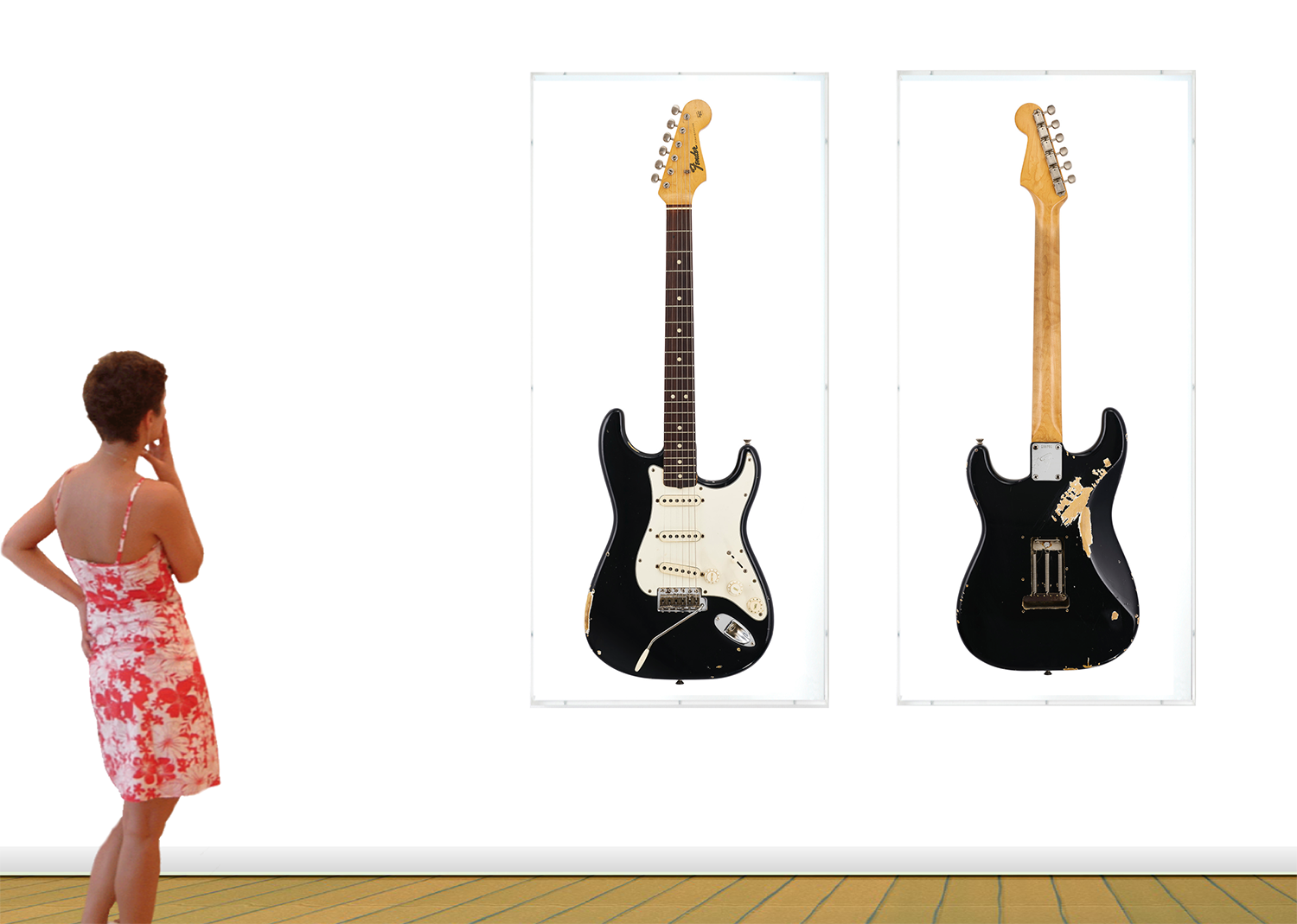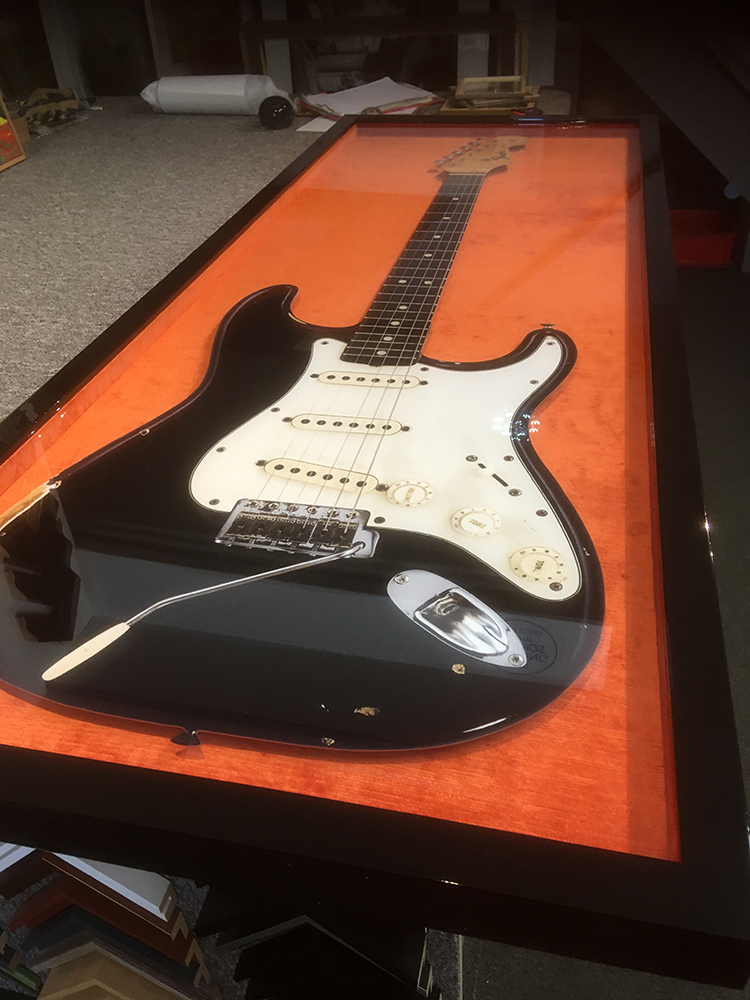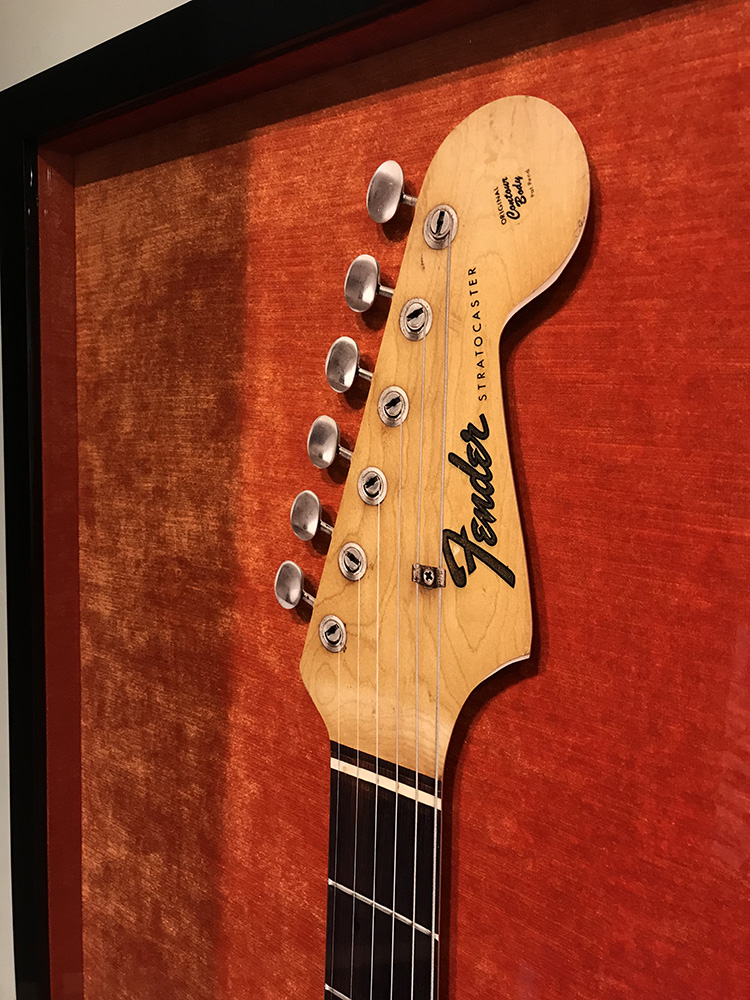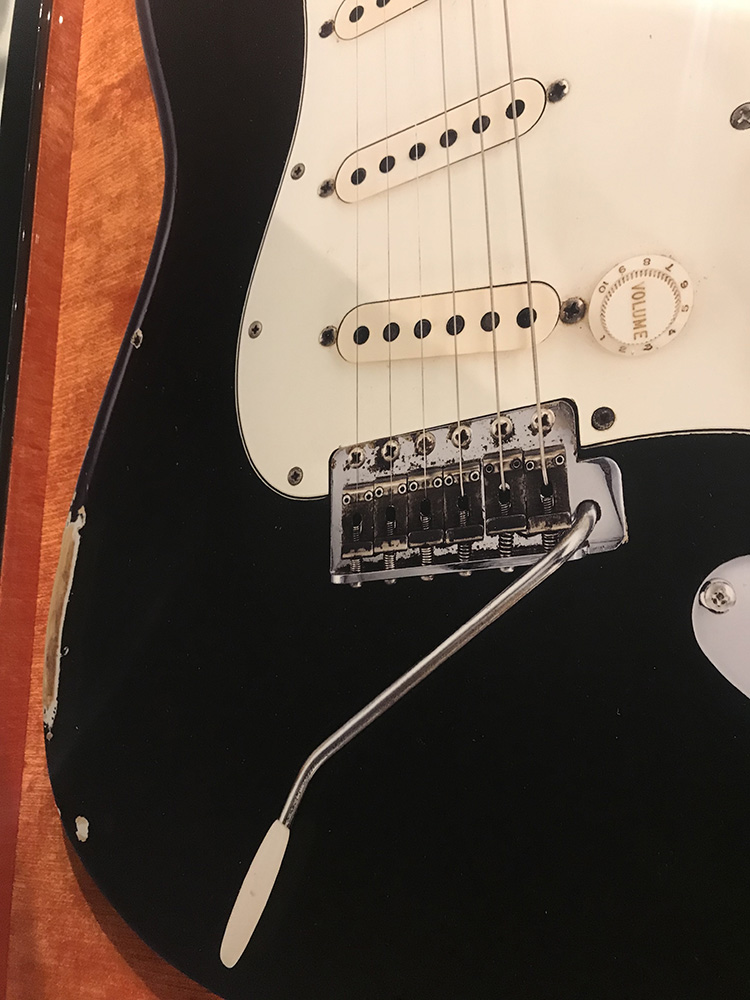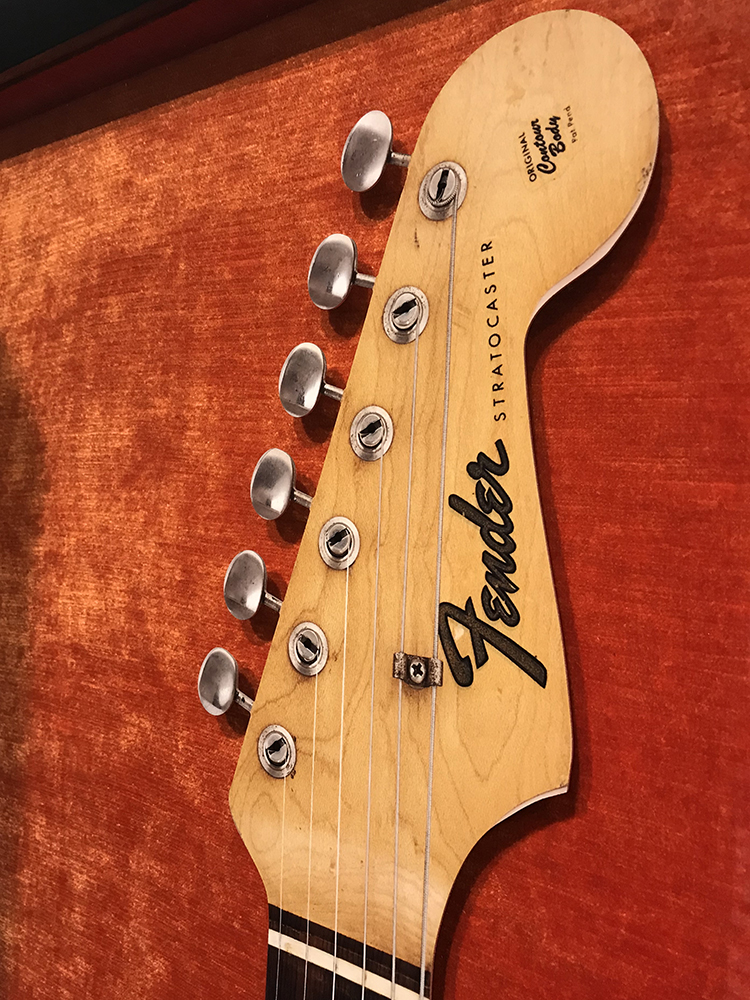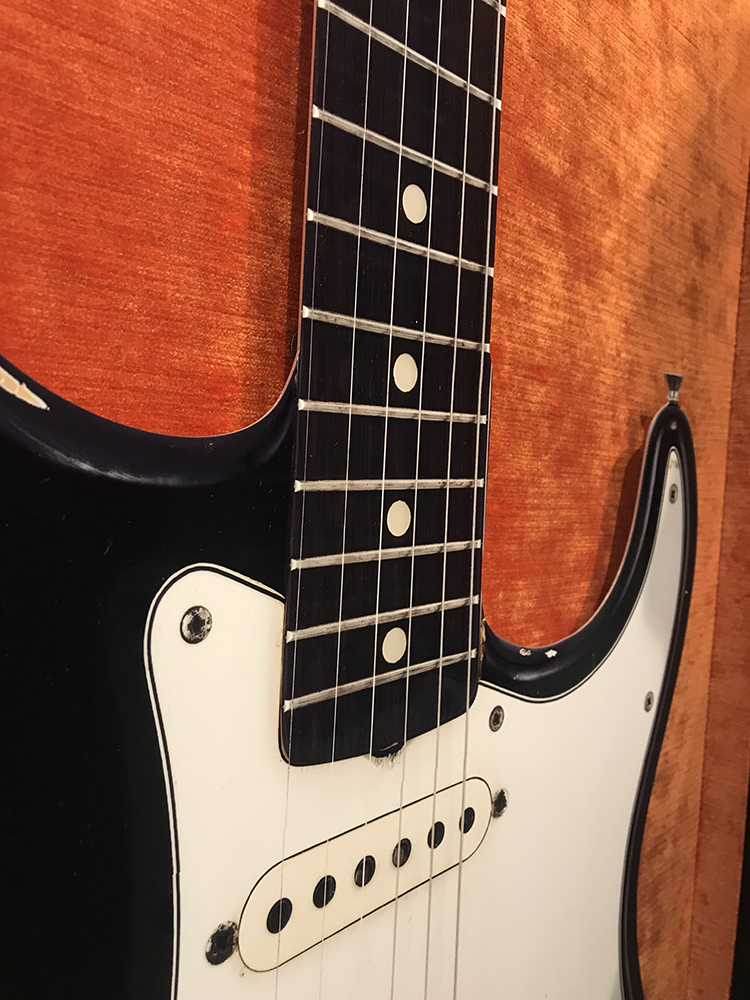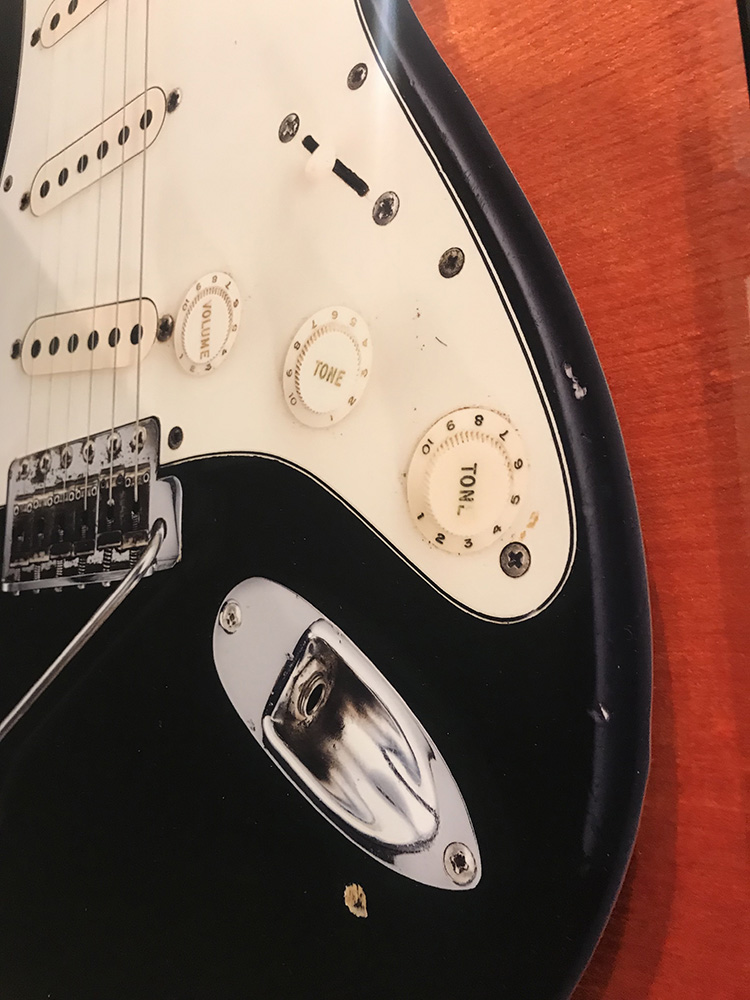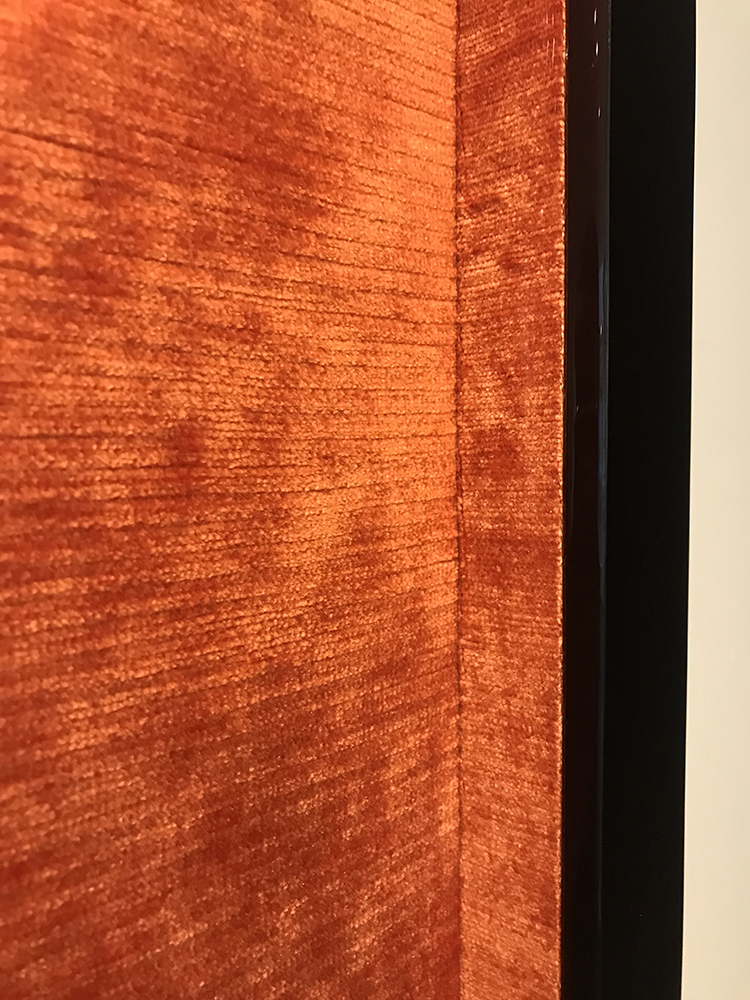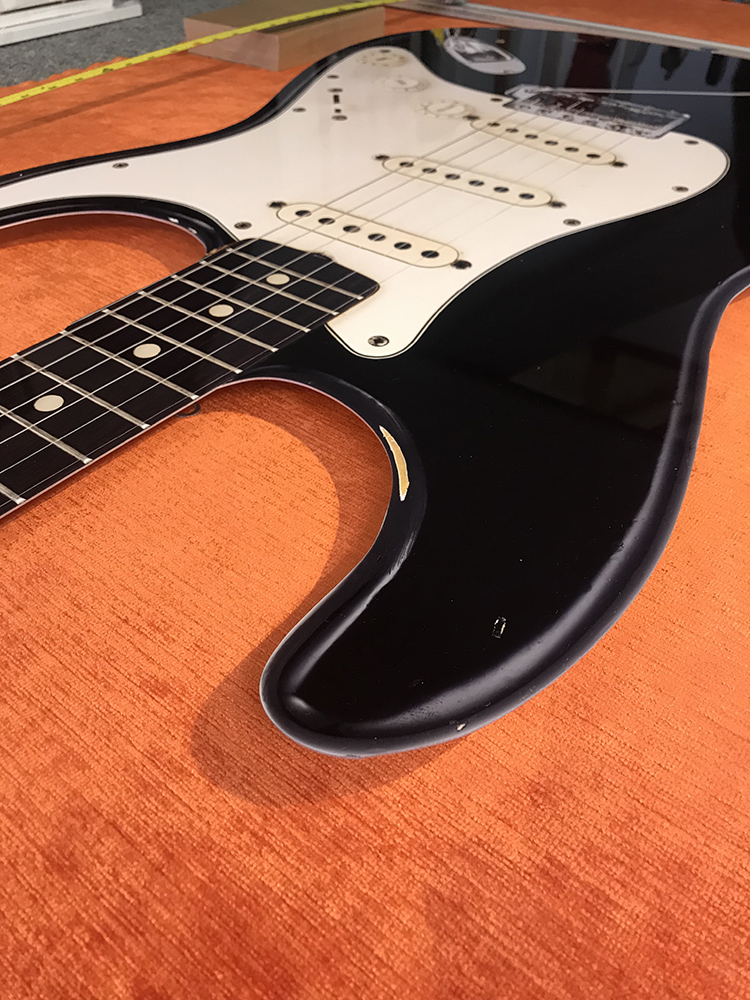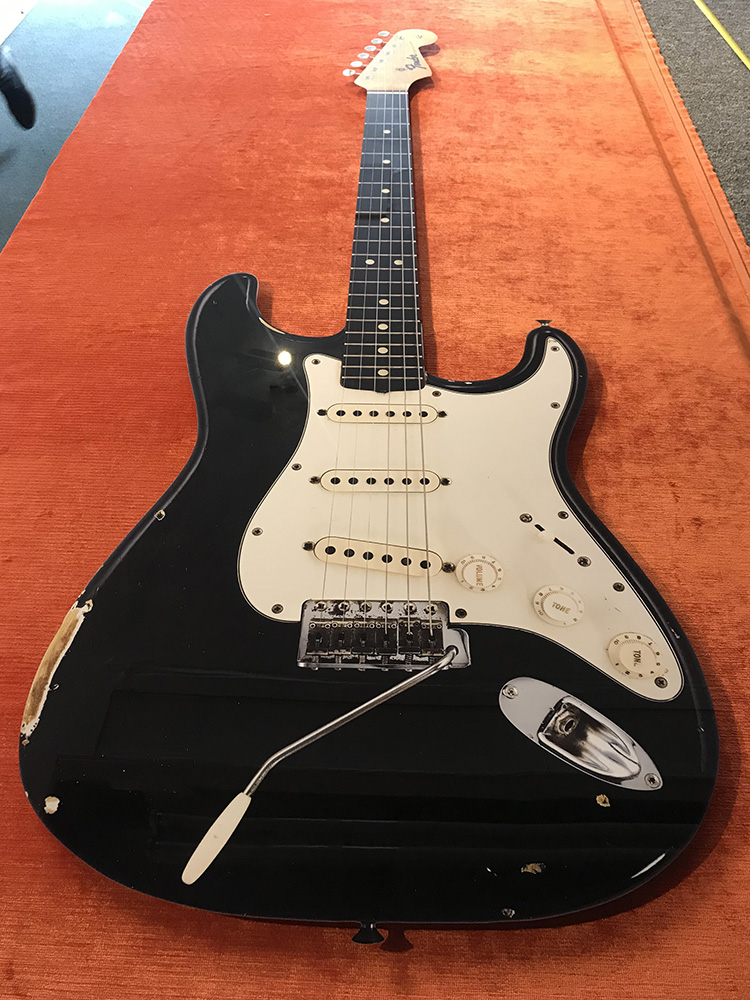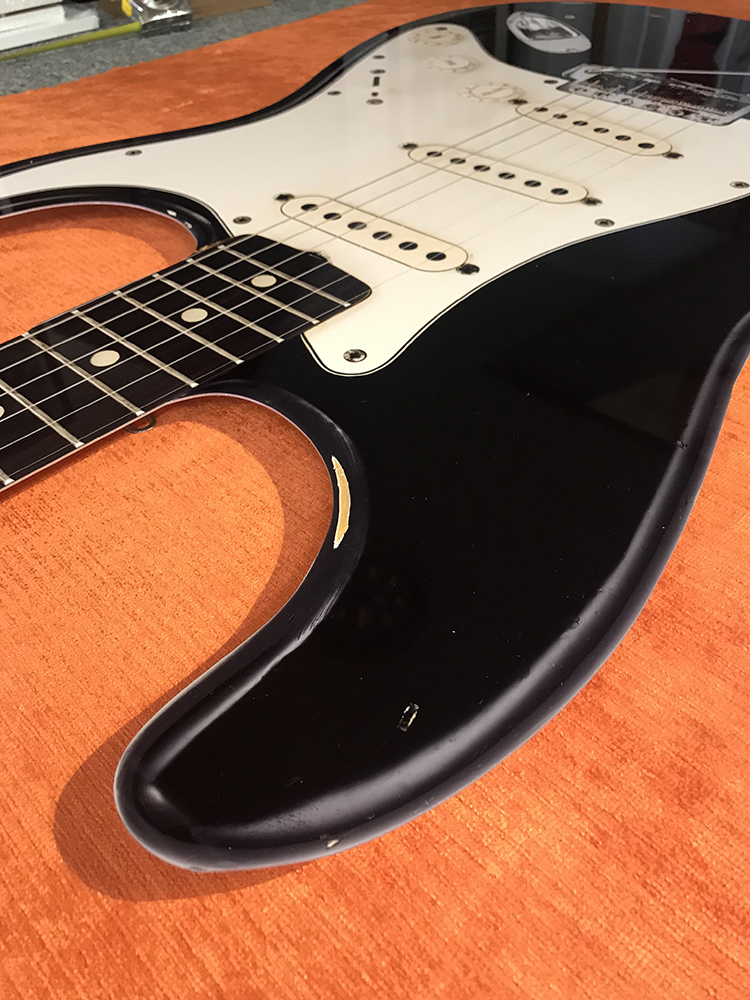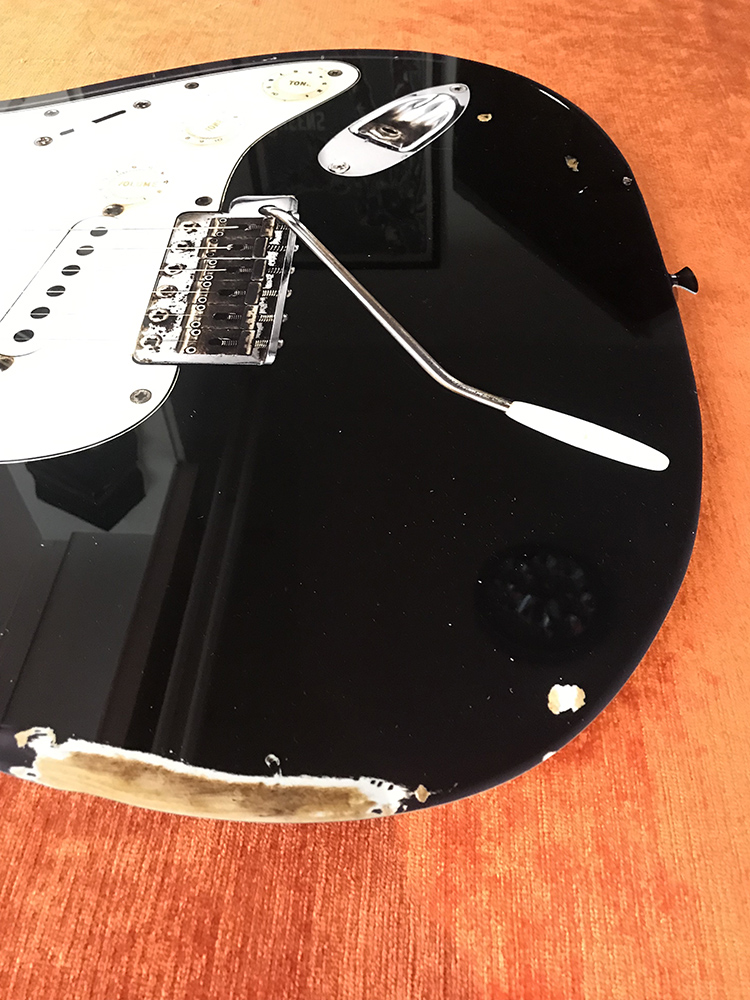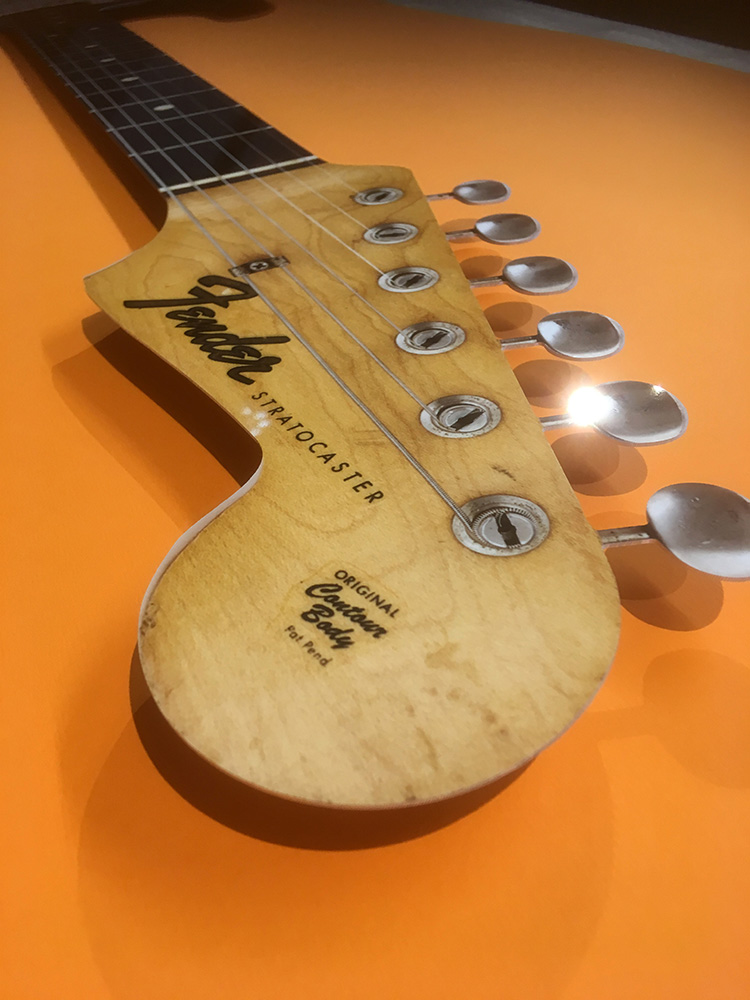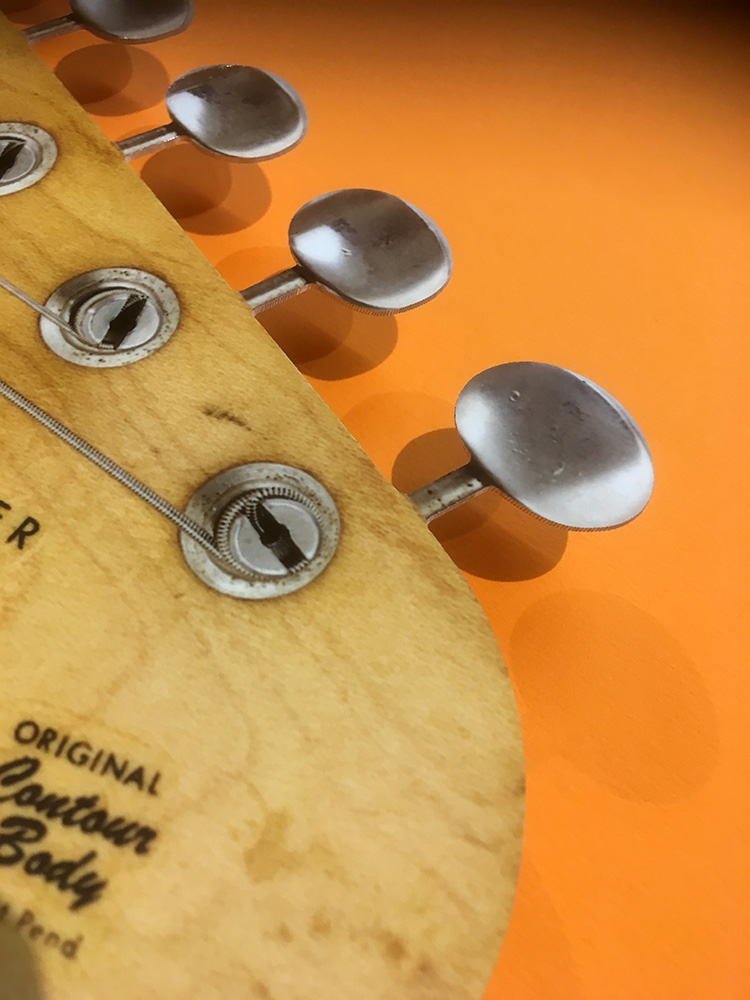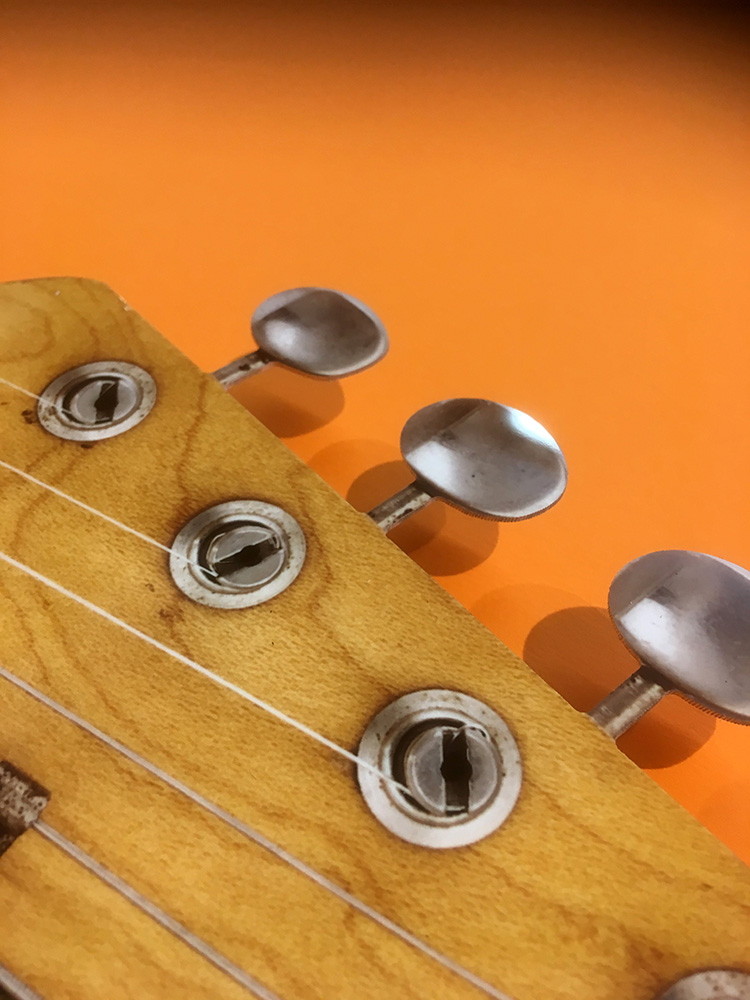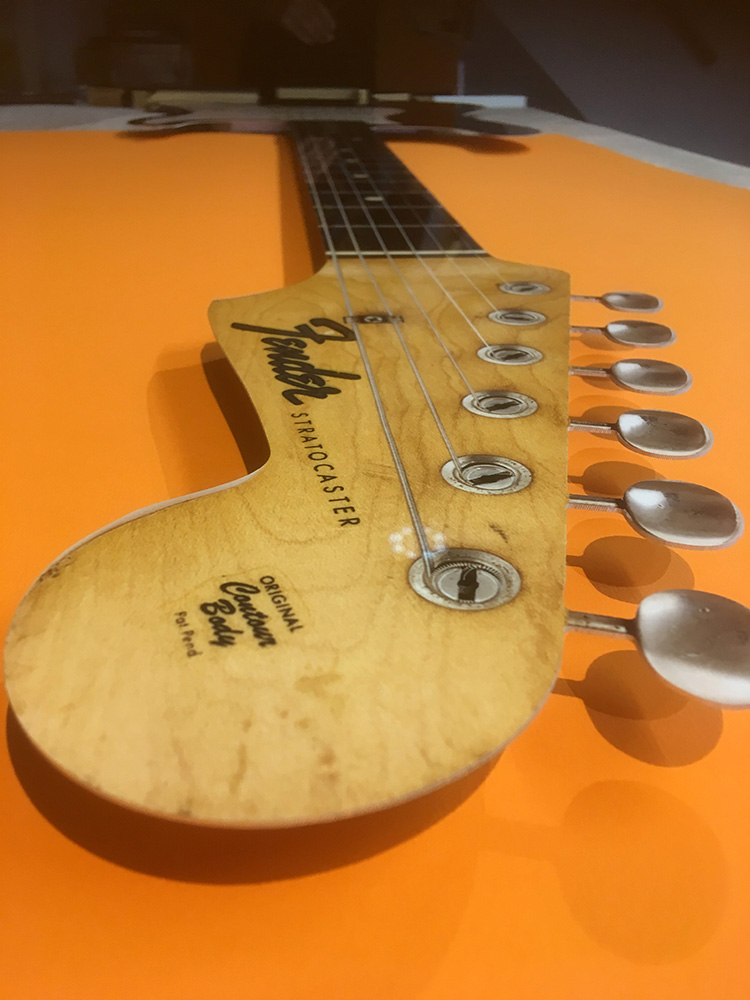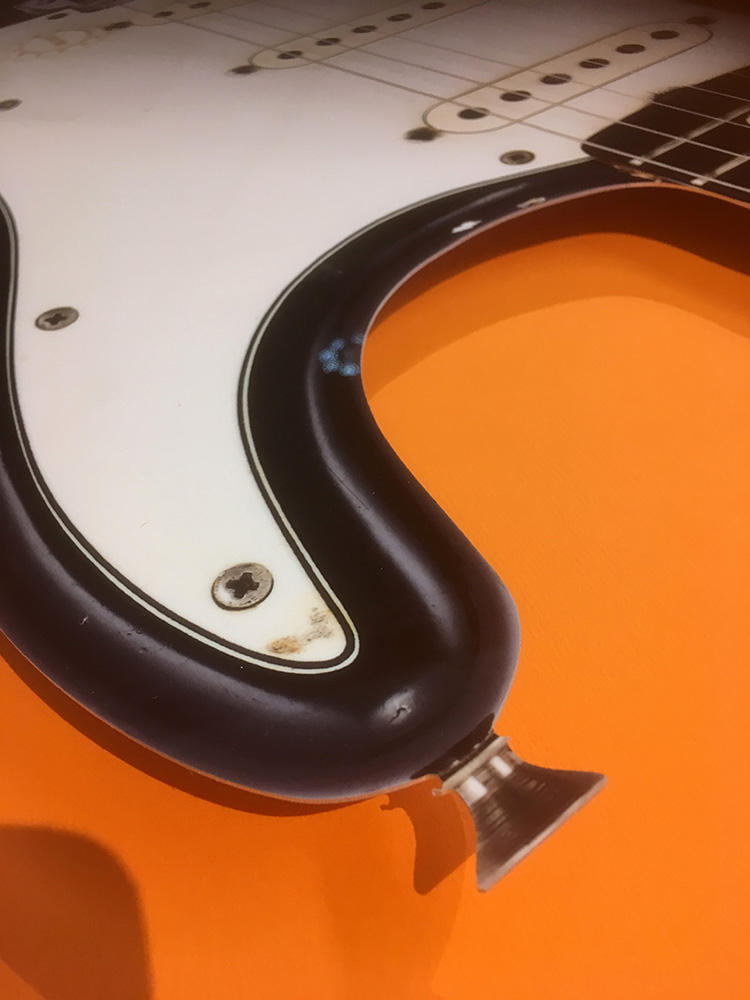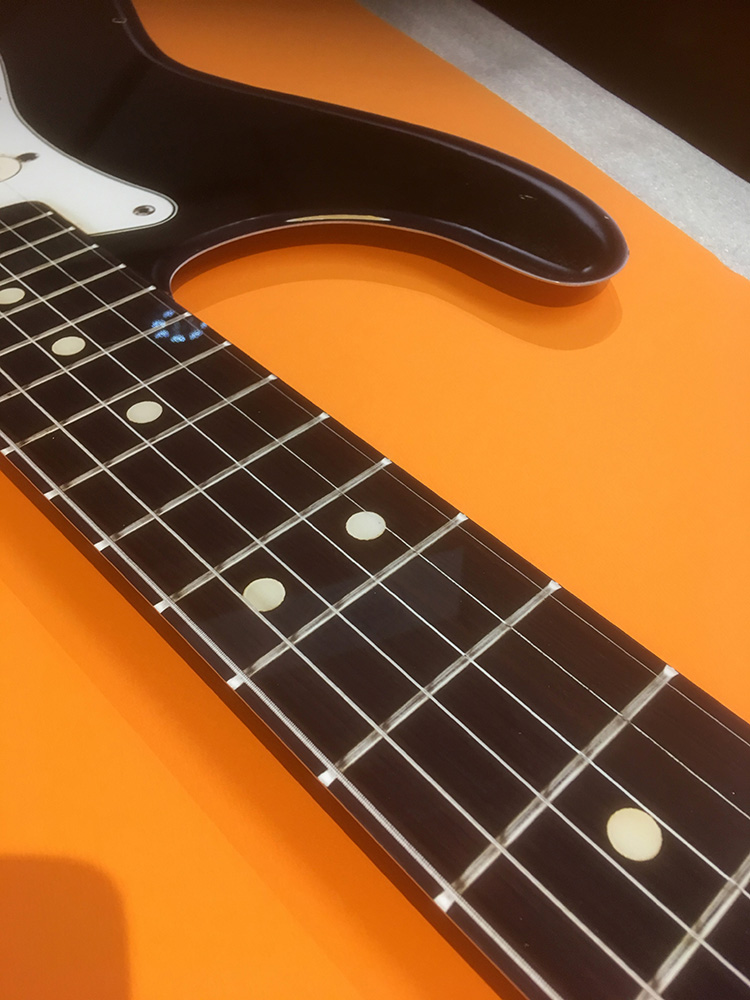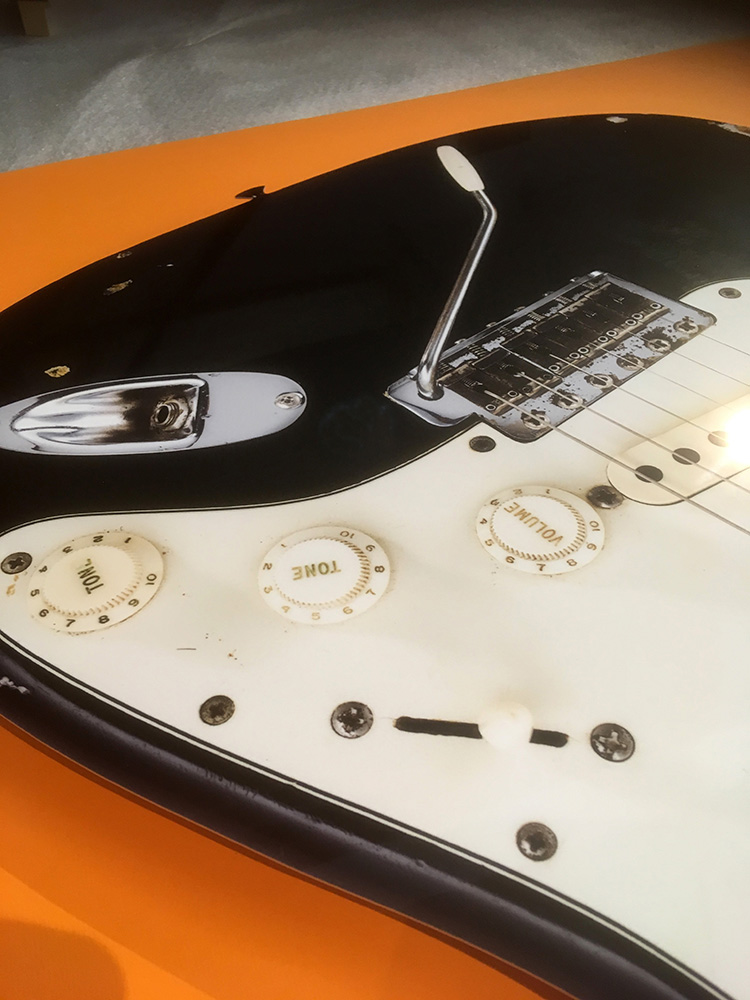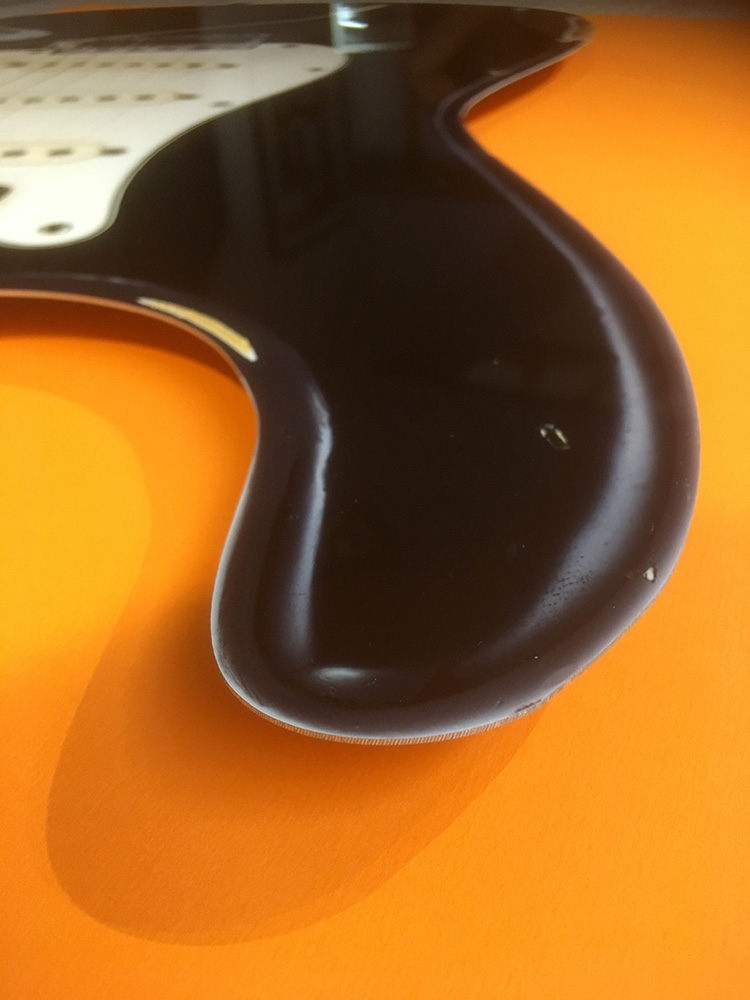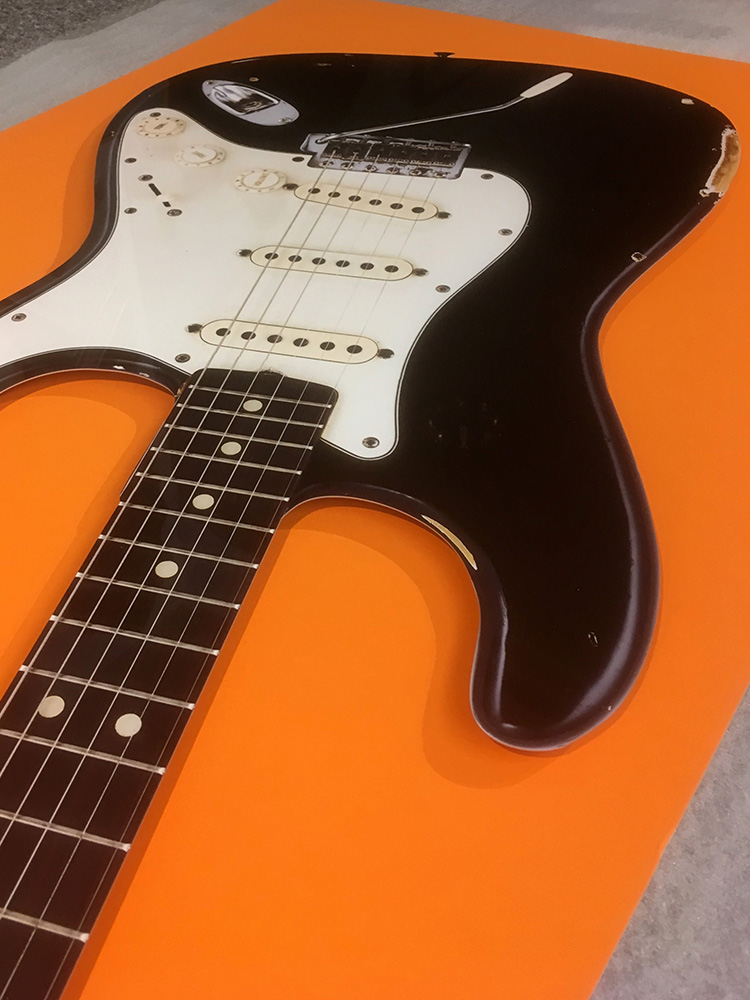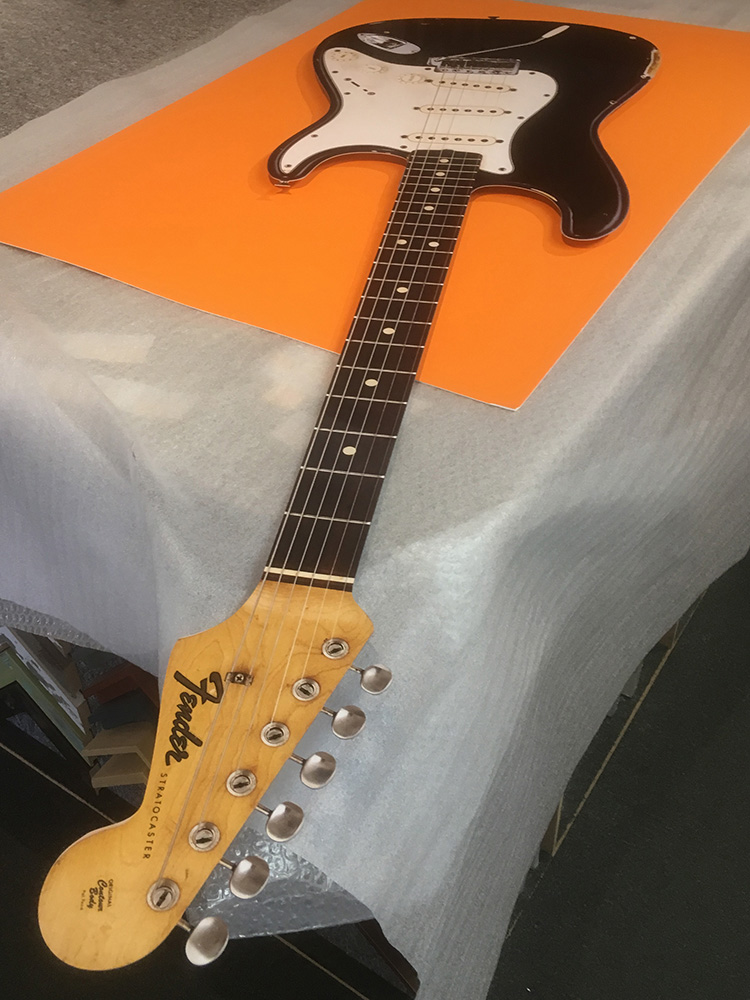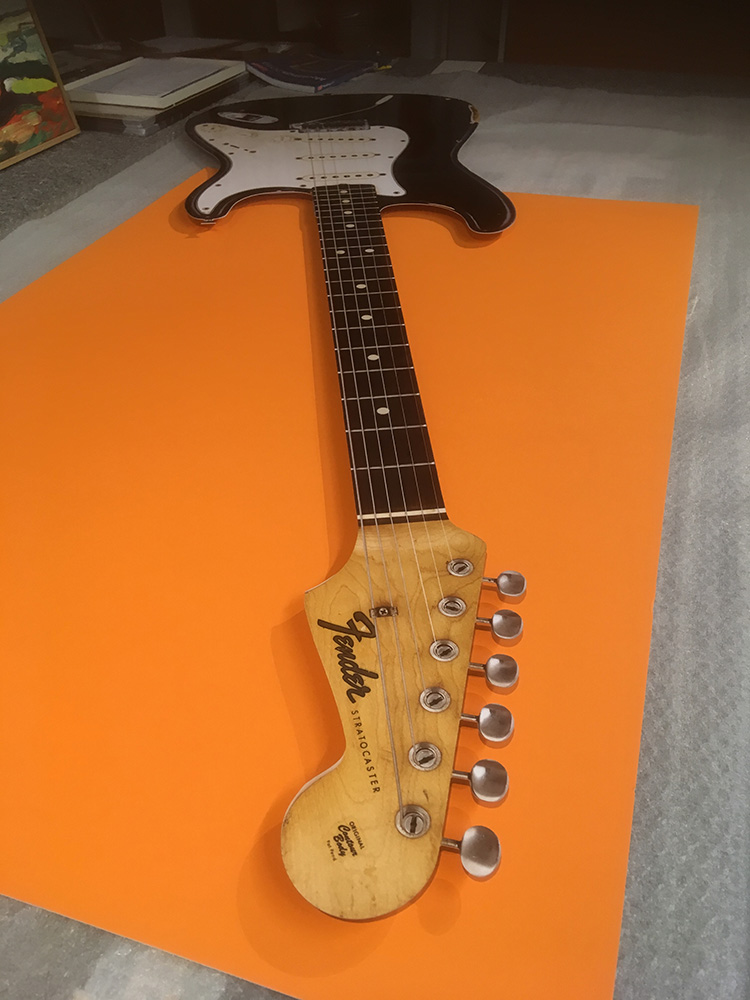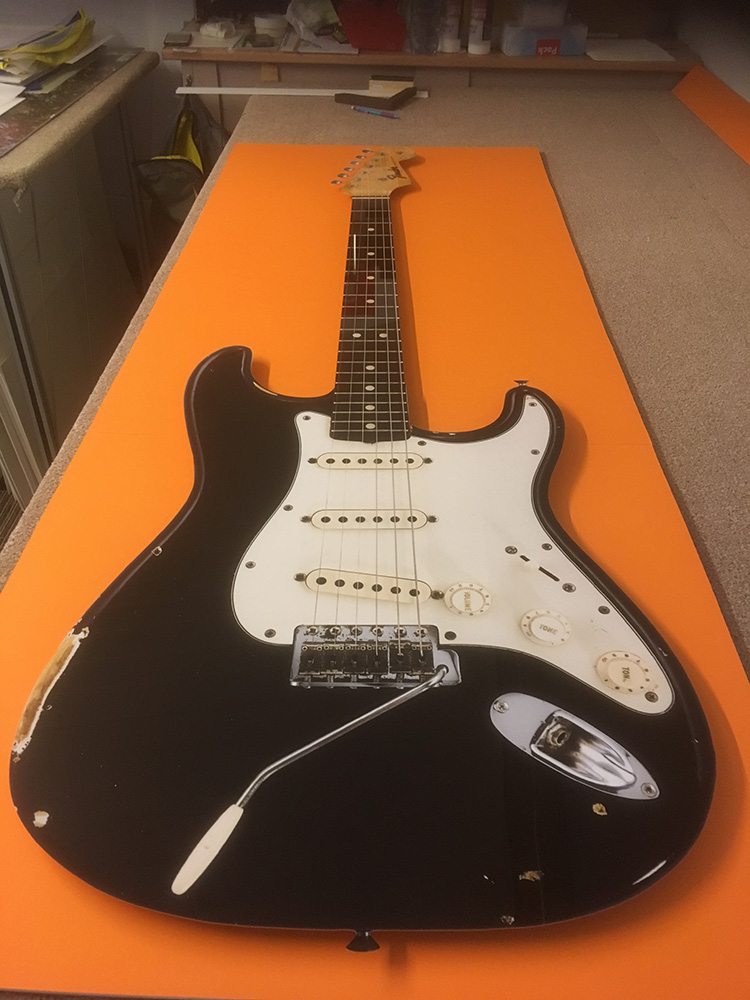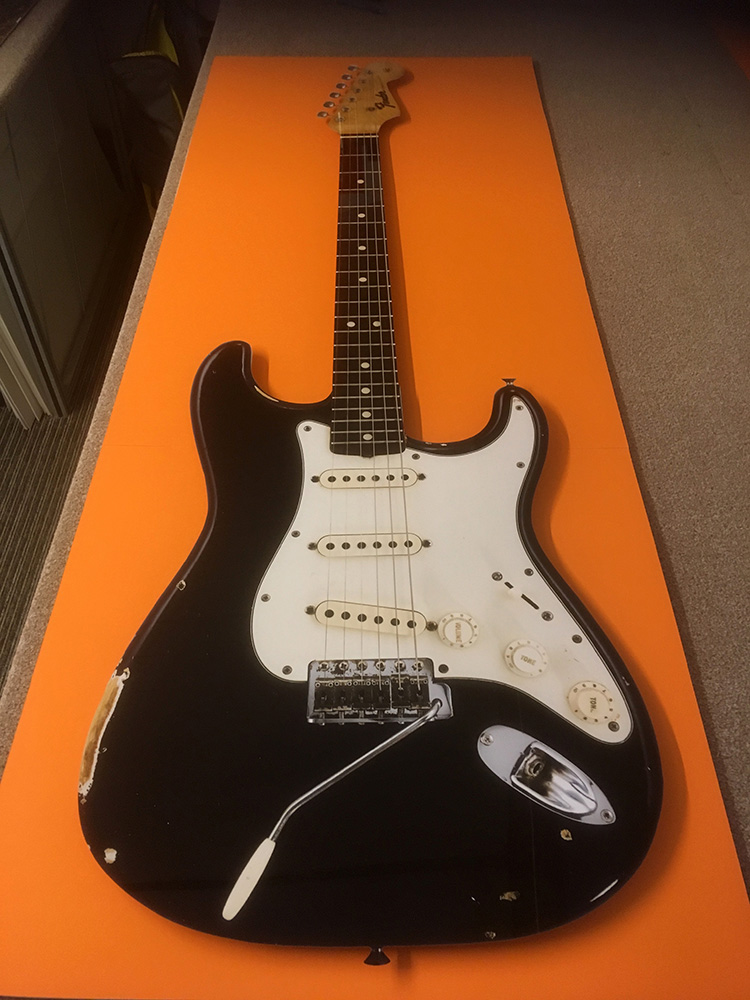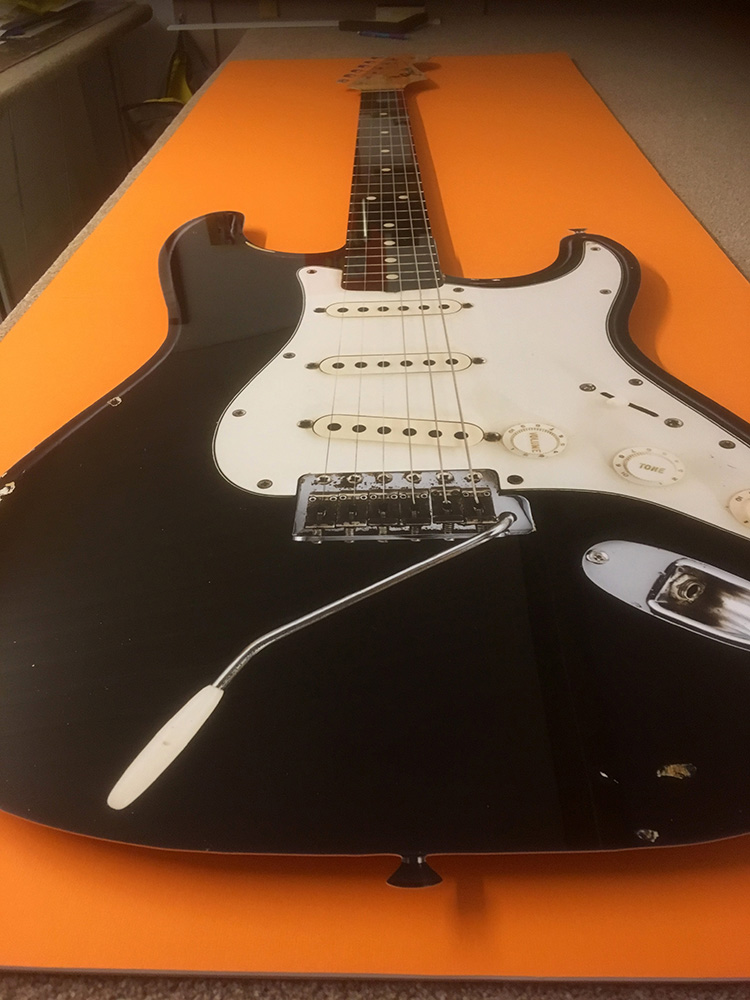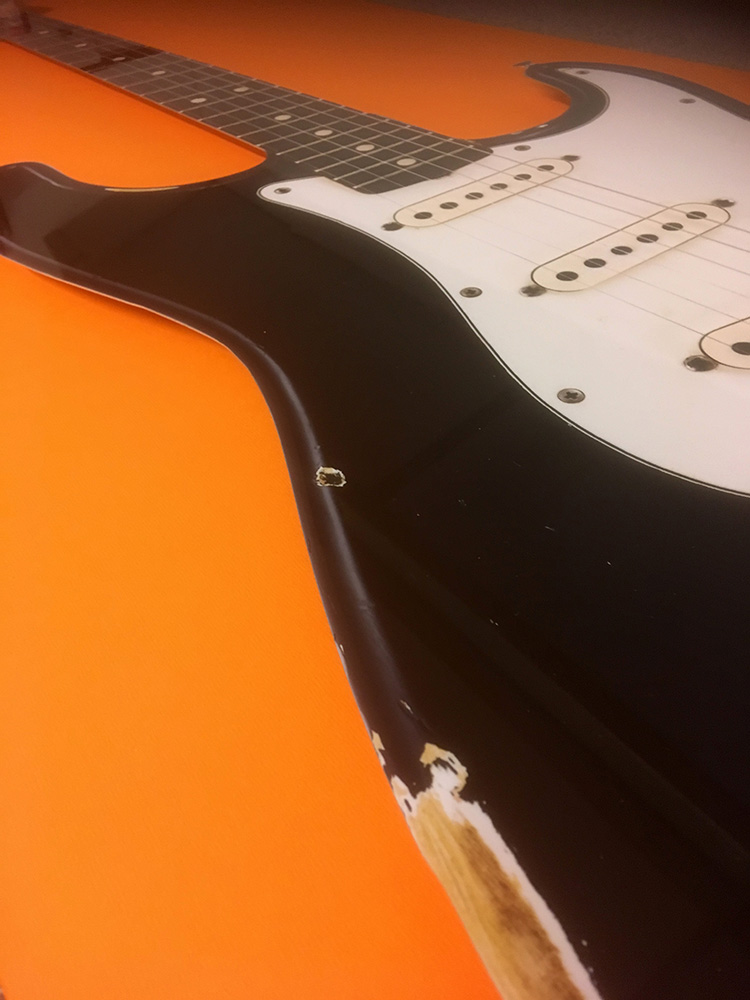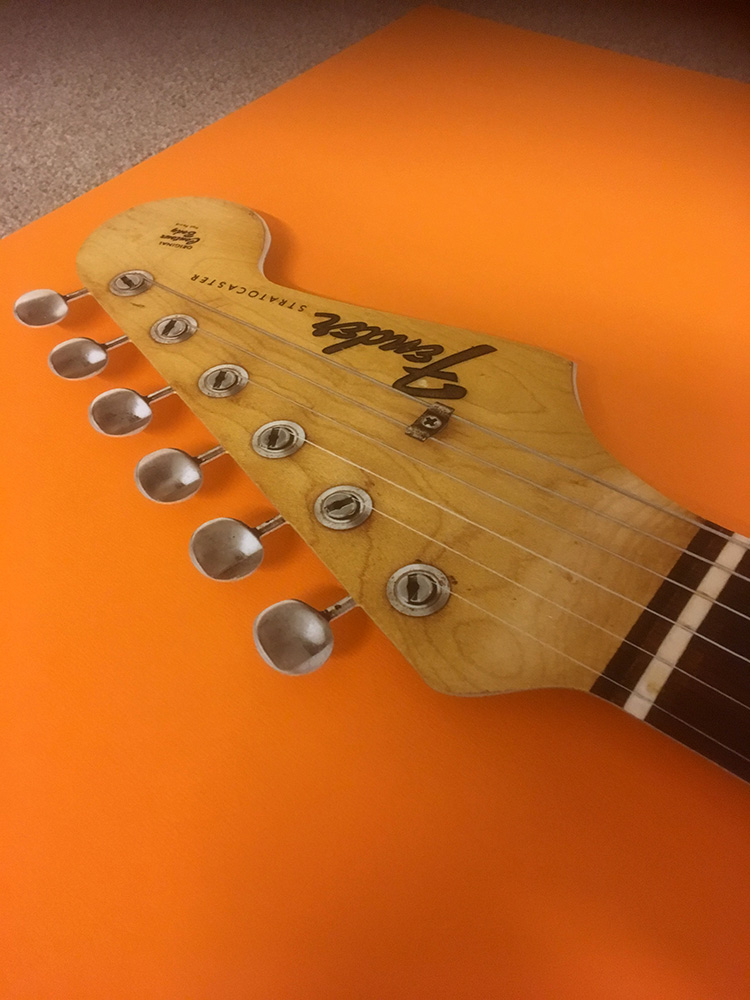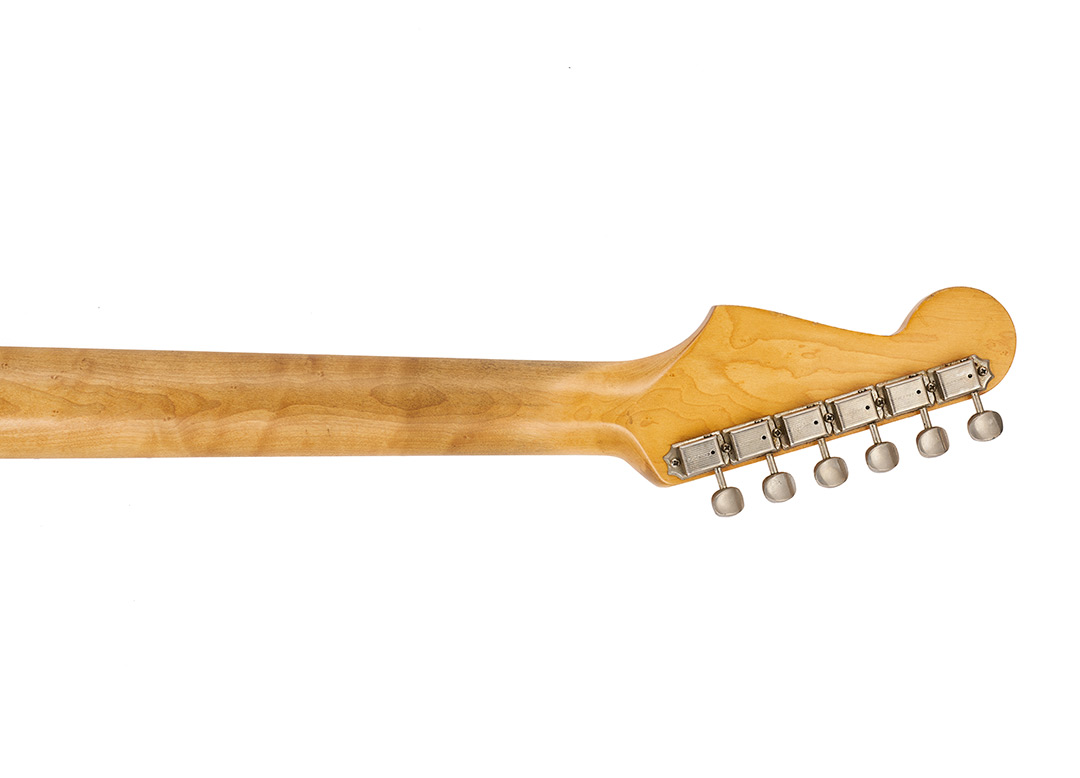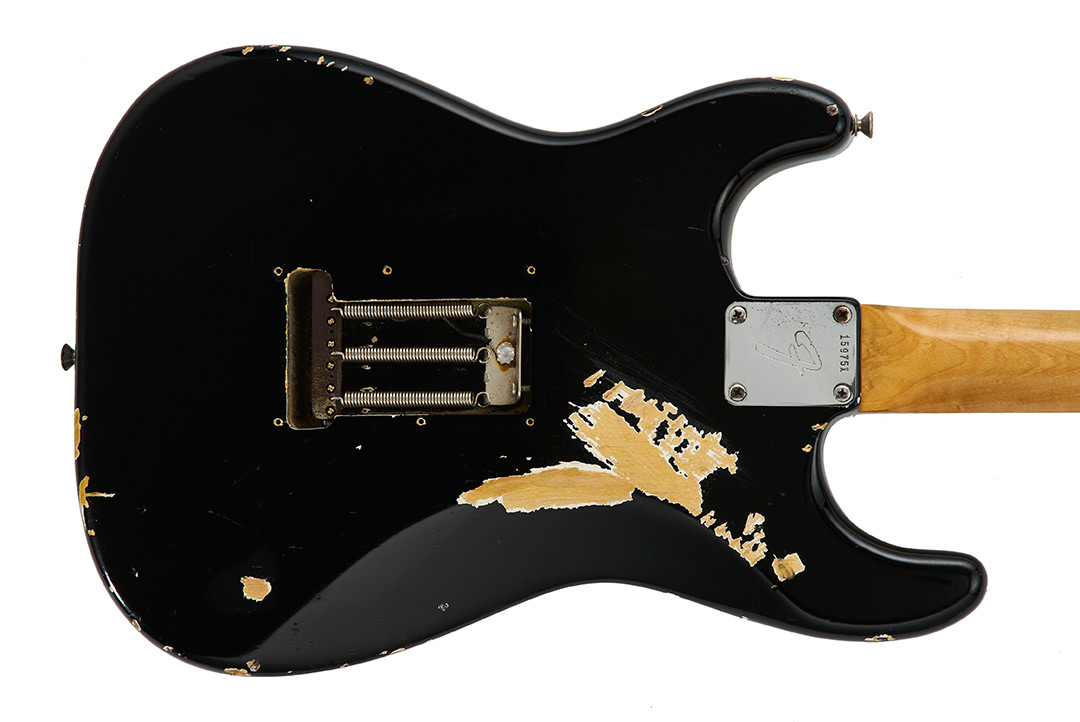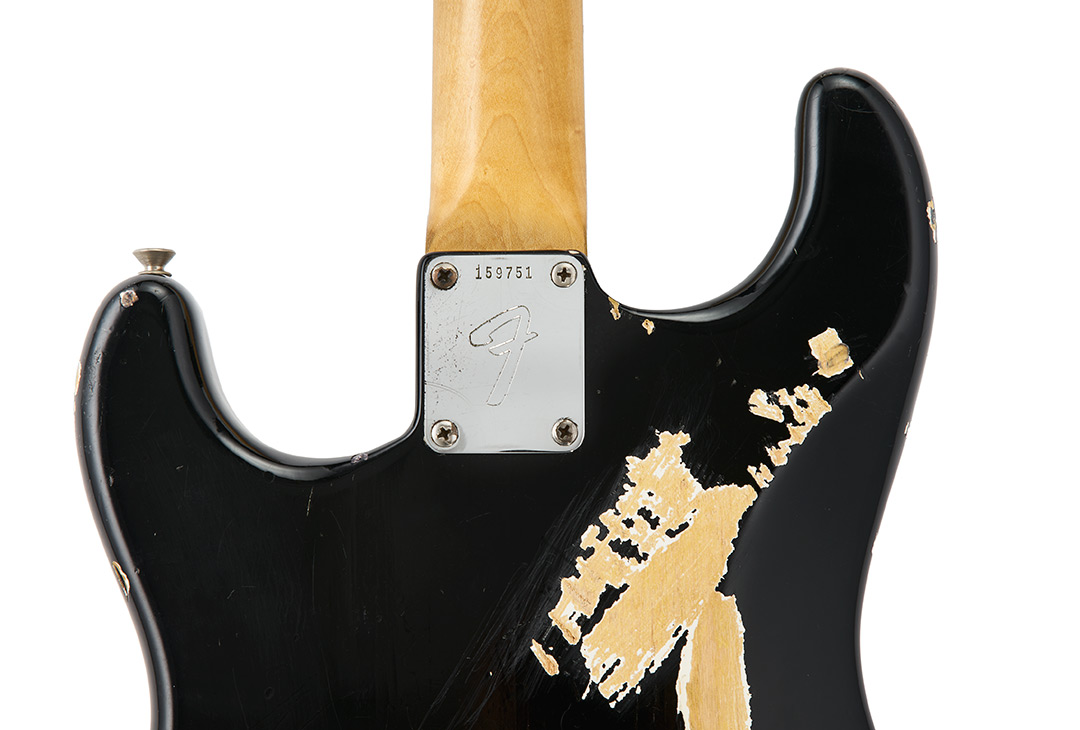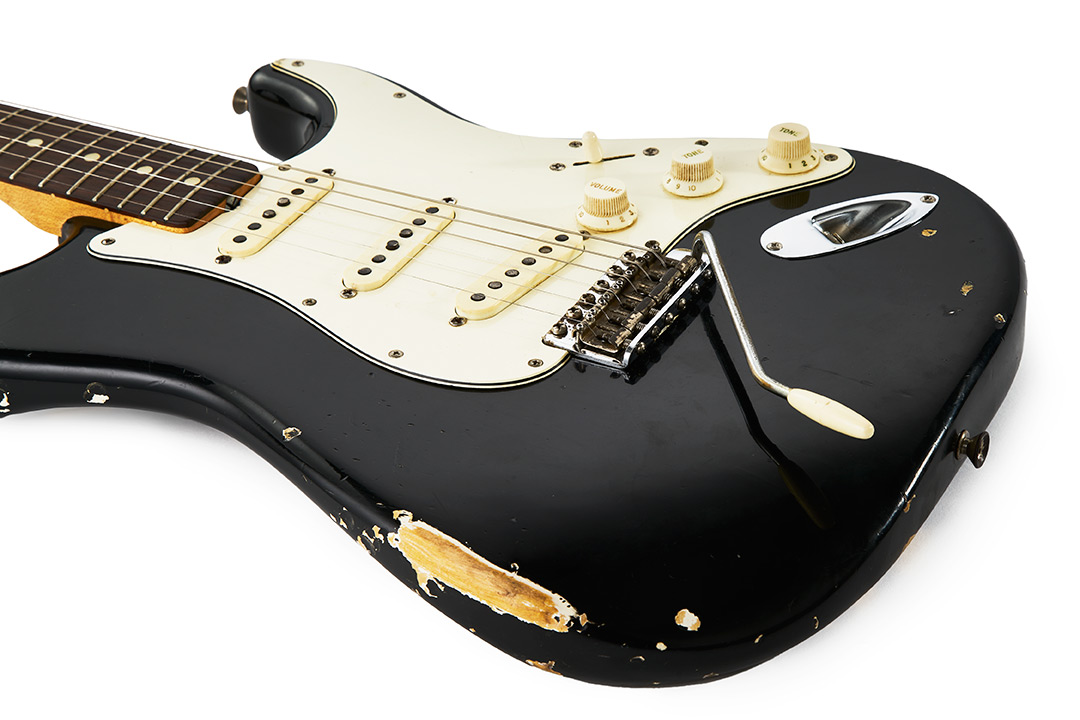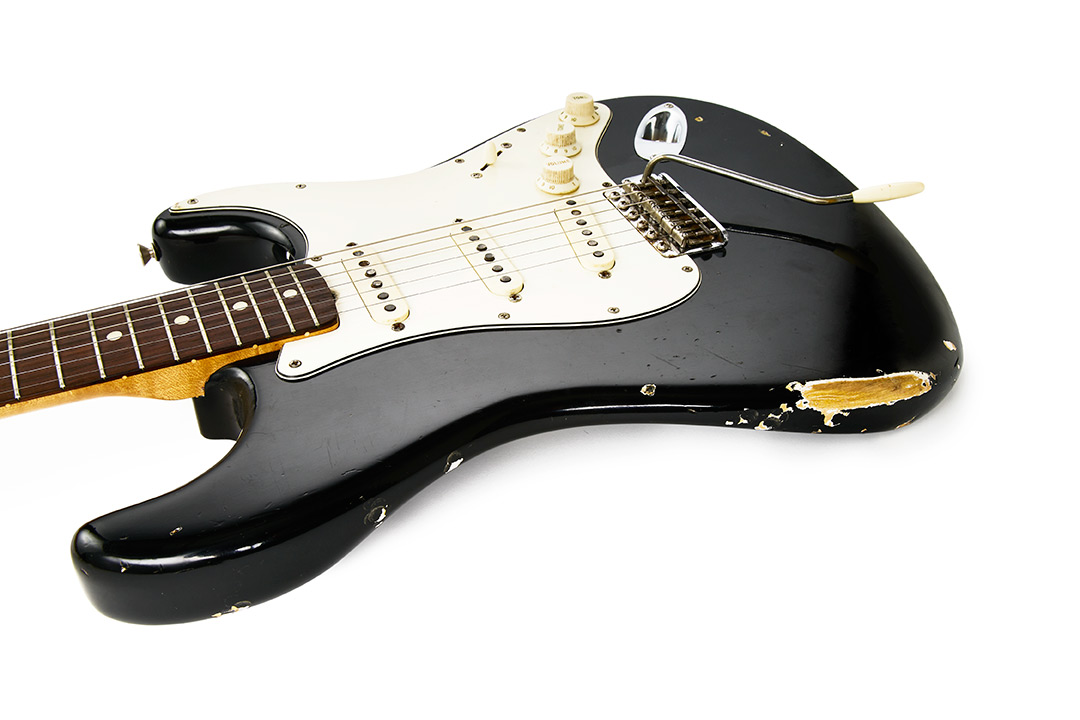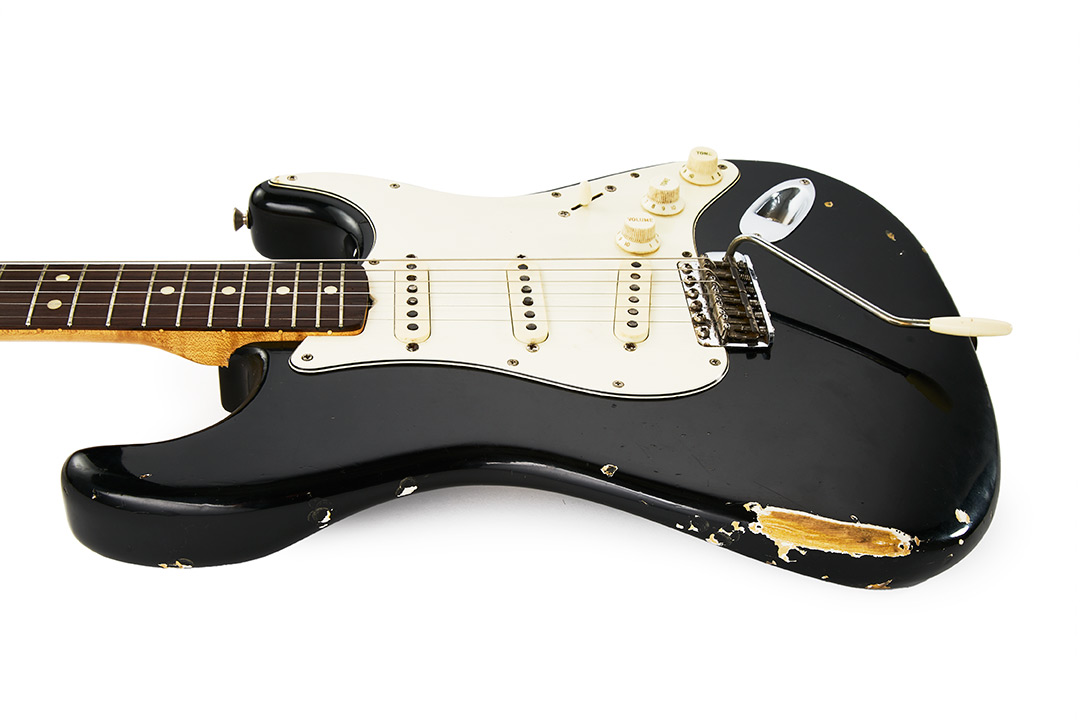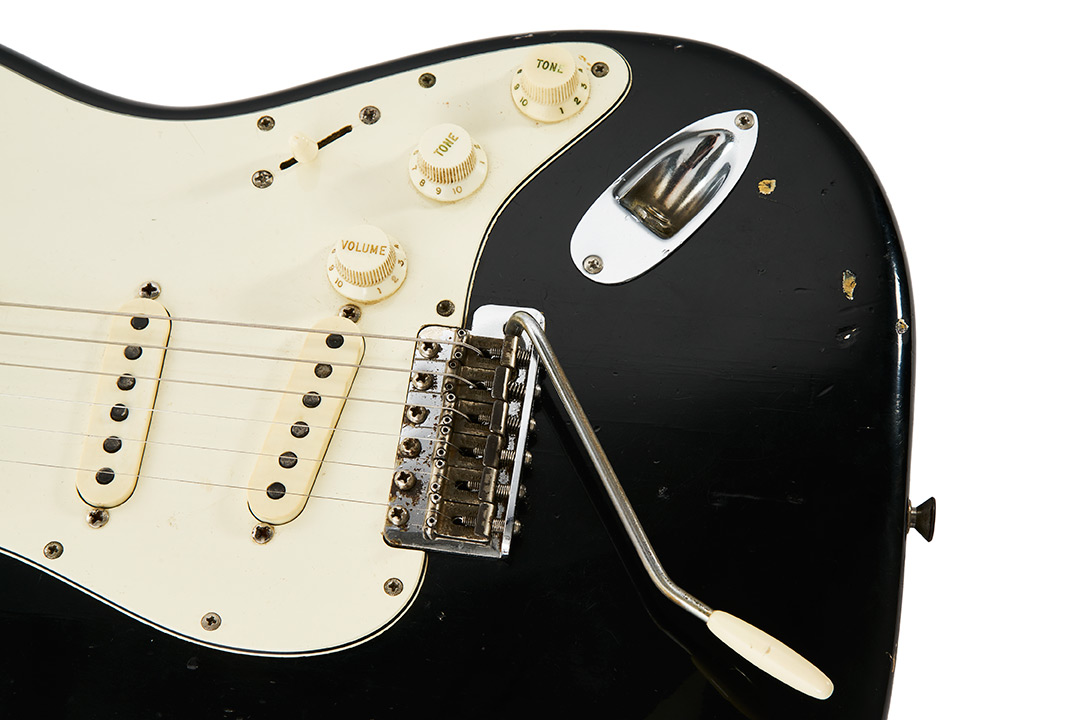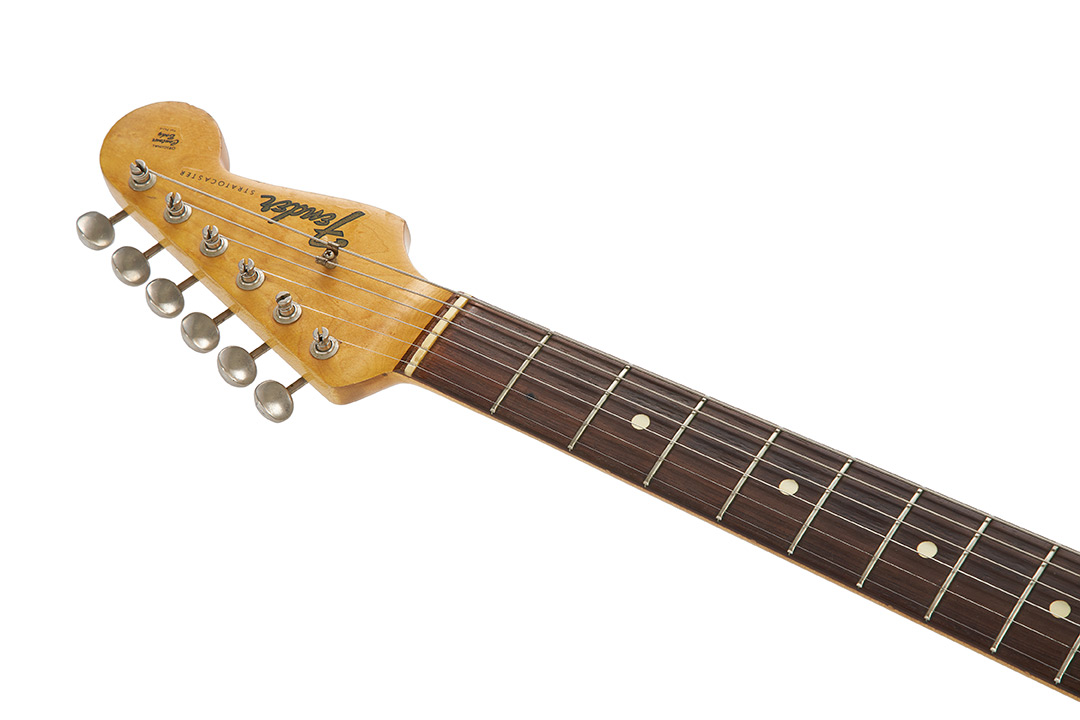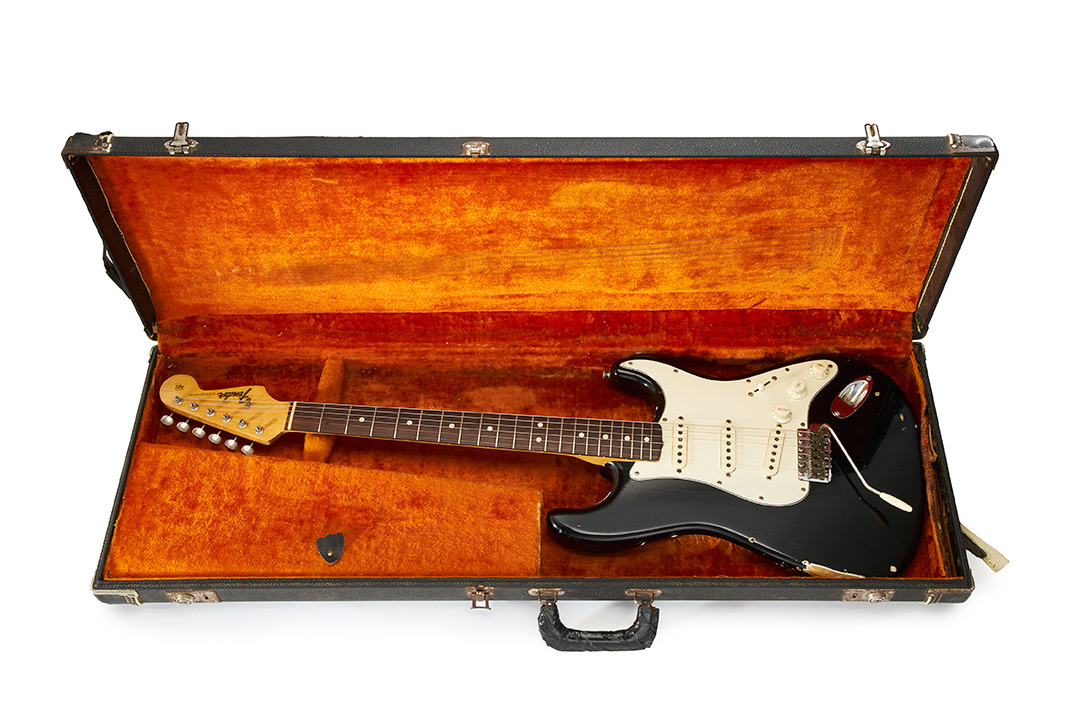Jimi Hendrix’s original 1967 Monterey Festival Fender Stratocaster
You probably know that historic guitars now fetch seven-figure sums at auction—topped recently by a collector with very deep pockets who was prepared to pay $4m for David Gilmour’s 1969 black Fender Stratocaster. Auction prices have been rising over the years—a John Lennon-owned Gibson J-10E Acoustic Electric fetched $2.4m in 2015–and the days when you could purchase guitars such as Bob Dylan’s Newport Folk Festival Stratocaster or Eric Clapton’s “Blackie” hybrid Strat for under a million dollars seem to be gone.
How about the guitar that Jimi Hendrix played at the Monterey Festival? You know the one—the black Fender Stratocaster with the rosewood neck that he played in the incendiary 1967 concert that cemented his reputation as a global superstar. It is a guitar that stands up there with the very best. It was Jimi’s weapon of choice for one his greatest performances, and a vital and integral part of the history of rock and roll. The original is going to be sold at auction in 2020 but in the current market you would need to be prepared to invest a seven-figure sum to purchase it. That puts it out of reach for most.
But how about owning a slice, for a fraction of the price of the original guitar? Don’t worry—not an actual slice—we are not going to to be damaging the guitar. We have a different strategy for this Stratocaster. Working with the owner of this historically important and cherished instrument—the actual guitar that Jimi Hendrix played at Monterey—we have created a large-format, three-dimensional, limited edition photographic artwork, that you can hang on your wall and enjoy every single day.
This is a limited edition piece, and just twenty five people on the planet will be able to own one. Unlike the original, it will not require a seven figure outlay. Each artwork is made on a bespoke basis to suit your exact space requirements. It can be made in any size up to a staggering 280cm / 110 inches—that’s just over nine feet long if you want to go that big. You don’t have to – you can choose the perfect size for you. You get something close to the experience of owning the actual guitar, but in a completely innovative way—and in a size and presentation style that you can choose to fit your personal space.
Want to know more?
What happened at Monterey?
“Paul McCartney was the big bad Beatle, the beautiful cat who got us the gig at the Monterey Pop Festival. That was our start in America.” – Jimi Hendrix
On Sunday 18 June 1967, The Jimi Hendrix Experience made their first US appearance at the Monterey International Pop Music Festival. Over the course of a nine-song set of covers and originals, Jimi Hendrix made an indelible and incendiary mark on the history of rock and roll.
Jimi played a trusty black Fender Stratocaster for the first eight songs in the set. You can see it in the photograph alongside, by our good friend and long-time gallery artist Bruce Fleming. This is the guitar that we are so interested in. For the final song, a cover of “Wild Thing” (a song first popularised by The Troggs in 1966) he switched to a hand-painted guitar. As that song drew to an end, he set fire to the painted guitar. What we have for you doesn’t involve that painted guitar—after all, it is burnt and only fragments remain.
Paul McCartney was on the organising committee of the Monterey festival and had no hesitation in recommending Jimi Hendrix to the other committee members. Hendrix had not been back to the States since leaving to play in England and in the US he was still unknown. That was about to change. The other main headliner on Sunday 18 June was The Who. Pete Townshend was well aware of Jimi’s powers, and was determined that they would not follow The Experience. A toss of a coin decided it, and The Who went on first.
The performance at Monterey is the stuff of legends, but there’s another famous story involving the same black Stratocaster—this time at the Saville Theatre in London on Sunday 4 June 1967—a week or so before he flew to the US for his Monterey performance—and, importantly, just a couple of days after The Beatles released their Sgt Pepper’s Lonely Hearts Club Band LP. In front of an audience that included Paul McCartney and George Harrison, Jimi opened his set with the Sgt Pepper title track, playing it on his black Stratocaster.
Limited edition photographs from Bruce Fleming’s archives are available to purchase here.
So what exactly is this thing we are offering?
It’s a photograph—but not just any photograph.
Dig this: we can transform Jimi Hendrix’s original black Monterey Stratocaster—as a custom service for you and in a size of your choice–into a huge three dimensional version for your walls at home or at work.
The finished artwork looks like a real guitar. It is guitar shaped. It has a three-dimensional quality. You can see the nicks and scratches that accumulated over the years that Jimi played it. It has a custom ultra-high-gloss finish that makes the colours just ‘pop’.
It can be made in any size of your choice up to a staggering 280cm / 110 inches—just over nine feet long. The huge scale does something really quite incredible and dramatic to the original—like nothing you will have seen before.
You can choose the front view, rear view, or both, and there is a choice of presentation methods and framing styles. Each large format artwork is made bespoke for you—in a size and presentation method completely personal to its owner.
Only twenty-five are available worldwide.
Sounds interesting? Read on to find out more.
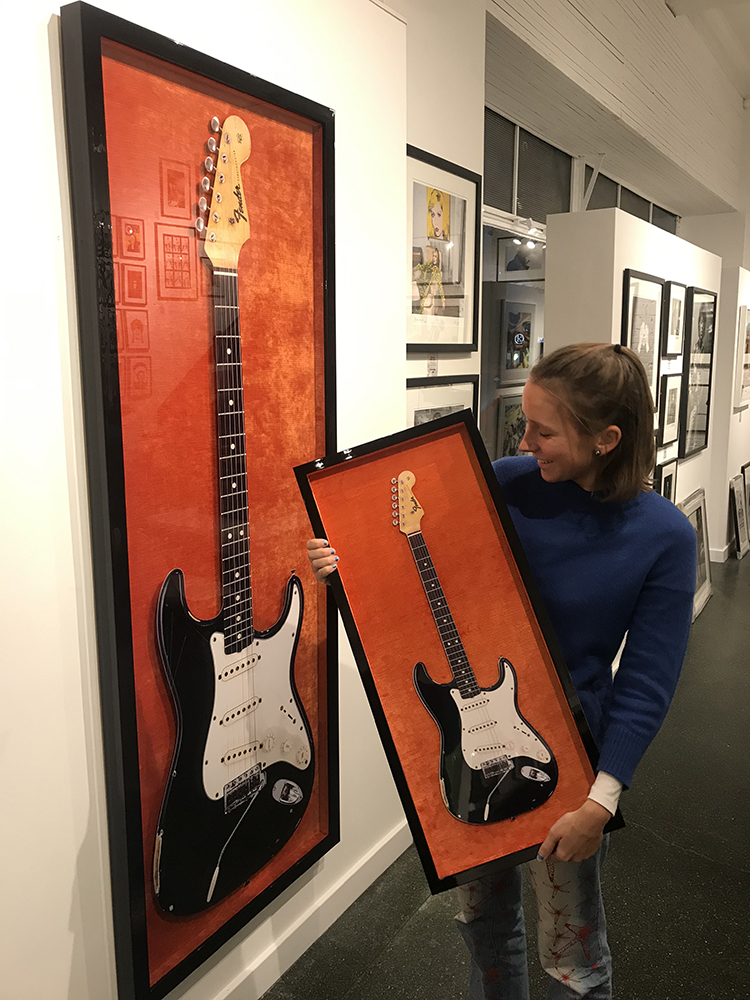
Here is a framed example on the gallery wall. This beauty measures 75 inches x 28.5 inches (190 x 72.5 cm) framed size, with a 69 inch (175cm) long guitar. The frame you see is a high gloss piano black wooden frame, and is lined with sumptuous orange velvet—an echo of the vintage guitar case holding the original. The baby version in the photograph (and yes, mother and baby are both doing well) has a 25 inch inch (64cm) long guitar.
The process explained
Step 1: Using the actual guitar that Jimi played at Monterey
None of this would be possible without access to the guitar. It follows that the first and most important step is to locate the actual guitar that Jimi Hendrix played at the Monterey Festival—that black Fender Stratocaster with a rosewood fretboard.
Remember that this was the guitar that Jimi Hendrix chose to use for eight of the nine songs in the Monterey set—and the guitar that he chose not to burn. It was the guitar that he famously played on 4 June 1967 at the Saville Theatre in London, opening with the title track from Sgt Pepper.
Hendrix took this guitar with him during the band’s first US tour, where he used it at the Fillmore and Golden Gate Park in San Francisco, and the Whisky A-Go-Go in LA. From Monterey, The Jimi Hendrix Experience moved to five nights at Bill Graham’s Winterland in San Francisco, before heading back to the East Coast for an ill-judged tour with The Monkees.
After Jimi Hendrix died in 1970, the guitar remained in the possession of his UK manager Mike Jeffery, and later passed to his US manager Bob Levine, who kept it in his personal collection for decades. It was subsequently purchased from Bob Levine by a private collector, and then sold at auction in 2012, when it was acquired by its current owner. We have had full sight of all provenance documentation as part of the process.
This guitar has been exhibited over the years at various museum exhibitions, including the Handel House Museum in London in 2012/13, the EMP Museum in Seattle for their Hear My Train A-Comin’ : Hendrix Hits London exhibition in 2013/14, the Grammy Museum in Los Angeles in 2014/15, and the Victoria and Albert Museum in London for their “You Say You Want A Revolution: Records and Rebels 1966-1970 exhibition in 2016/17.
An example in production
Slideshow of images showing a 1.75m / 69 inch cut-out going through the framing process. We show it on an orange velvet background and an orange card background in these ‘in-progress’ photographs
The process explained
Step 2: Photographing the guitar
The next step was to have the guitar professionally photographed in incredible detail at the highest possible resolution. For this and other similar projects, we work with one of the UK’s leading professional product photographers, and a session was arranged at his London studio to shoot the guitar.
The guitar arrived in a beautiful vintage case, lined with vibrant orange velvet. Opening it up was a special moment, I can tell you. Just to be in the presence of something this important in the history of rock and roll was a very reverential and otherworldly experience, and as a result I resisted the urge to be photographed holding it.
The photo-session lasted four or five hours, and the main focus of our interest was of course the front view of the guitar, capturing every detail. The aim was was not to make a photograph that would be “sanitised” in Photoshop—it was important to see all those nicks and scratches that had accumulated over the time Jimi played it.
Turning the guitar over, we discovered that the back was actually pretty interesting in itself. Some serious ‘belt-buckling’ was evident on the reverse, caused by Jimi rubbing the guitar against his belt during his high-octane performances. The grain of the wood on the back of the neck is exquisite, and the exposed vibrato cavity on the reverse added some more visual interest.
As a result, we are offering a photographic version of the back view of the guitar as well. It would make a nice companion piece to the front view, maybe hanging side by side in matched frames.
The process explained
Step 3: Making the three dimensional print and cutting to shape
Each artwork is made as a ChromaLuxe print.
ChromaLuxe printing is a “dye-sublimation” process where the image is embedded into the surface of coated aluminium. Prints have a beautiful ultra-high-gloss finish. The process produces artwork with an outstanding depth and intensity of colour—comparable to traditional Cibachrome prints, which if you ever saw one of those, had to be seen to be believed.
ChromaLuxe prints are archival, highly resilient and require no additional glass, acrylic, lamination or coating to protect them. The dye-sublimation process renders images waterproof, abrasion resistant, fire resistant and chemical resistant.
As part of the production process, each artwork is precision cut to the exact shape of the guitar, which heightens the three-dimensional aspects of the experience. The fine detail of the cut-out is quite spectacular.
Because each ChromaLuxe print is made on aluminium (rather than paper, as is traditional for a photograph) it has its own structural rigidity. We also fix a 15mm subframe on the reverse of aluminium so that it can be hung directly on the wall without framing—if desired. This creates a three dimensional effect, as the artwork appears to ‘float’.
It can also be framed, and various different framing methods are possible. These are set out in more detail further on.
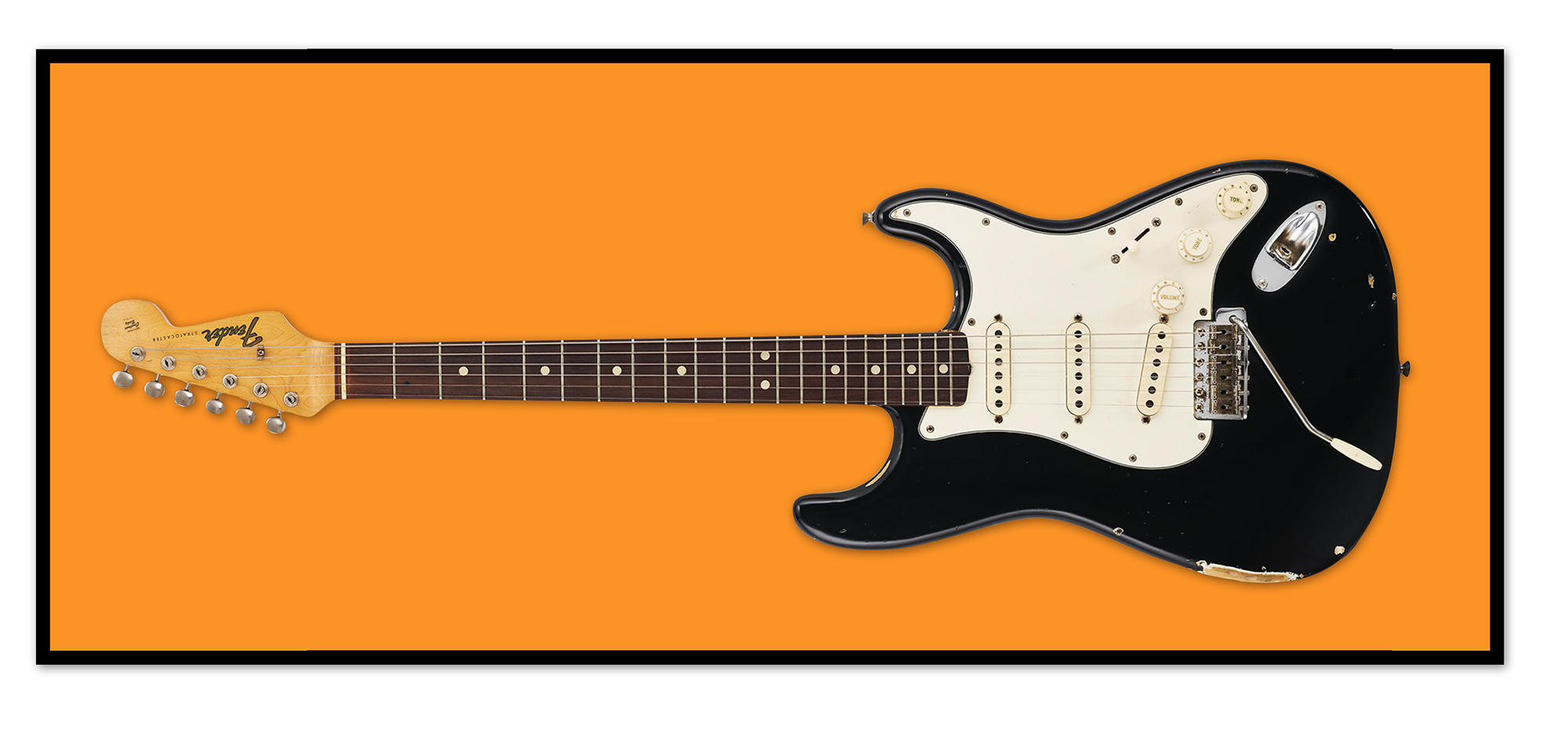
A bespoke artwork to suit your wallspace
In the gallery we will be displaying a guitar front measuring 175cm / 69 inches — or a touch under six feet.
Individual artworks are made to order in a size to suit your specific wallspace.
The maximum size that we offer is a staggering 280cm / 110 inches — just over nine feet long.
You can choose any size up to this maximum.
It could be life-size, something a little bigger, or something a whole lot bigger.
Limited editions
These artworks will be strictly limited.
Irrespective of size, only 25 examples of the image of the guitar front will be offered worldwide.
The same will apply to the image of the back of the guitar—just 25 will be offered worldwide irrespective of size.
